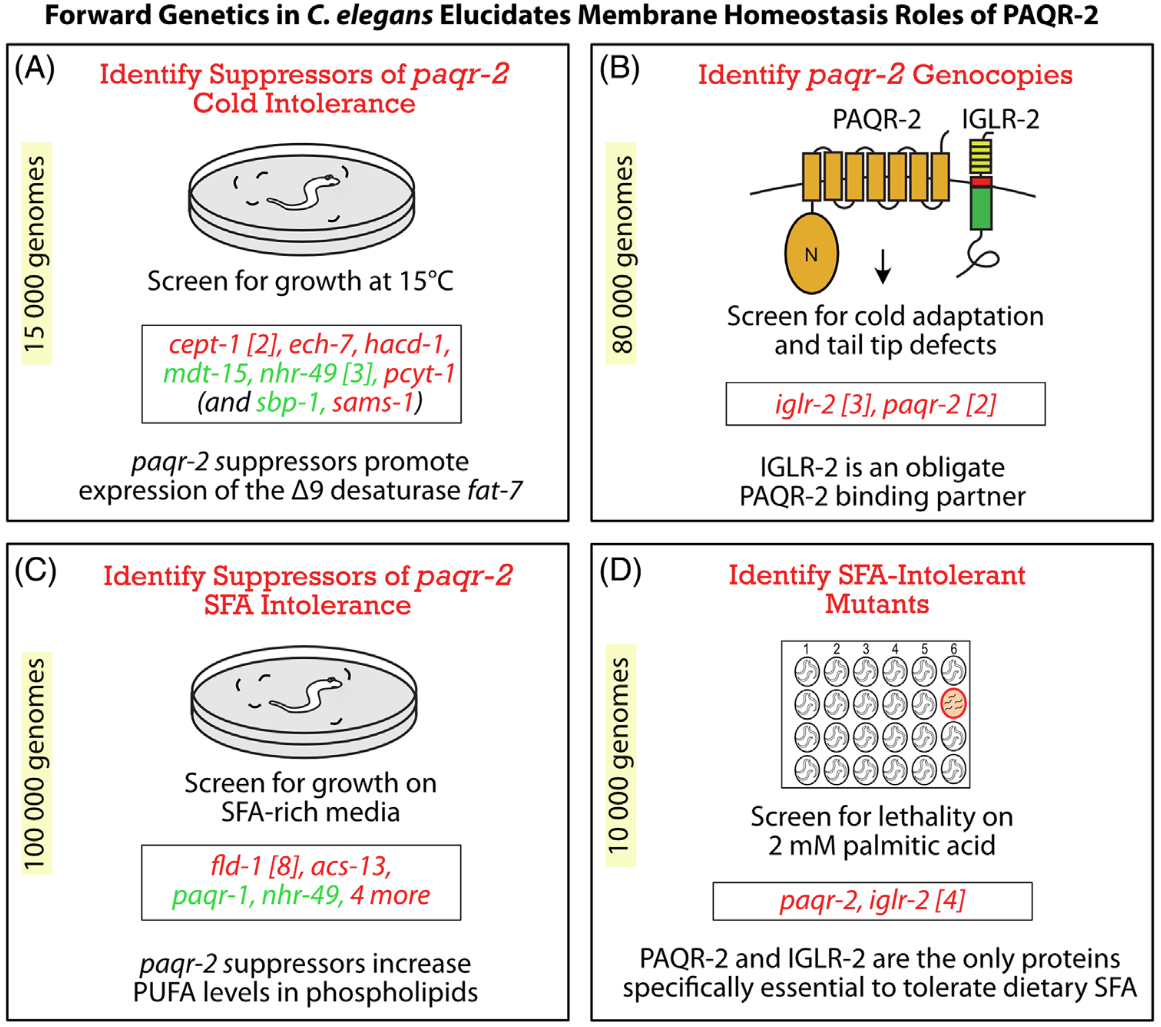
Membrane Fluidity and Other Functions of Unsaturated Fatty Acids
AdipoRs, membrane homeostasis and PUFAs
There are two AdipoR proteins in humans, called AdipoR1 and AdipoR2. These proteins were initially thought to act as receptors for adiponectin, but our new research reveals a different function. The AdipoRs have an unusual structure: they have seven transmembrane domain but their orientation in the membrane is inverse that of GPCRs: their C-terminus points into the extracellular space. We are studying their homologs in mammalian models and also in the small nematode C. elegans to elucidate how they function. Our work shows that PAQR-2, a C. elegans homolog of the AdipoRs, functions as a membrane fluidity sensor/regulator that is essential for tolerance to membrane-rigidifying saturated fats or in response to a rigidifying cold challenge (see illustration). We have shown that this function in membrane homeostasis is conserved in the mammalian AdipoRs. This work should lead to the identification of new targets for pharmaceutical intervention in the context of the many diseases where membrane homeostasis defects are implicated.
More recently we also started to explore more broadly the biological functions of polyunsaturated fatty acids (PUFAs) and to identify molecular mechanisms by which cells and organisms can compensate for a reduce ability to acquire or produce PUFAs. Our approach is similar to that used to study PAQR-2 (exemplified by the image at left): we screen for C. elegans mutants that can compensate for a diminished capacity to produced PUFAs.
The link below take you to a review that summarize our research on AdipoR/PAQR proteins.